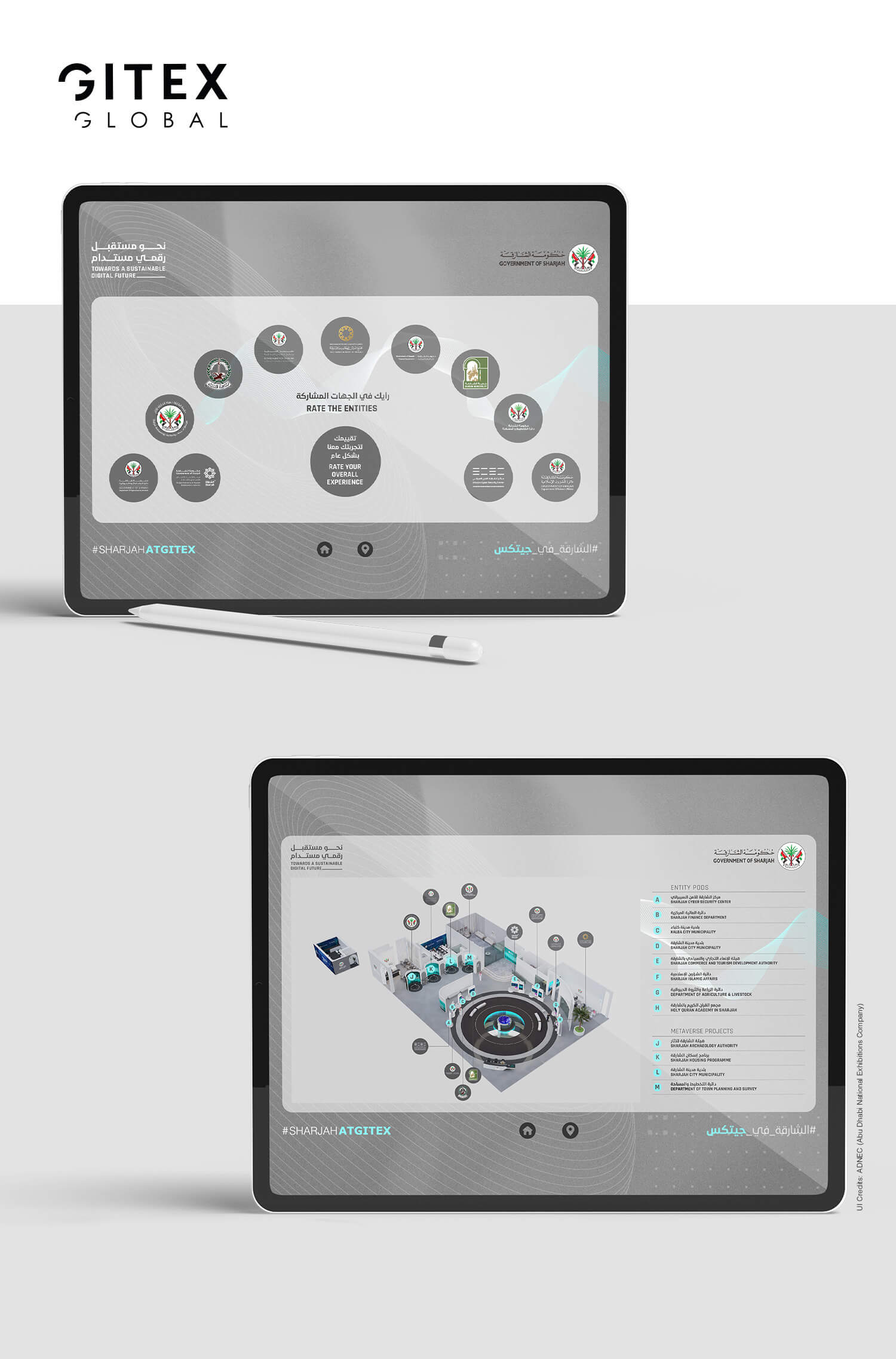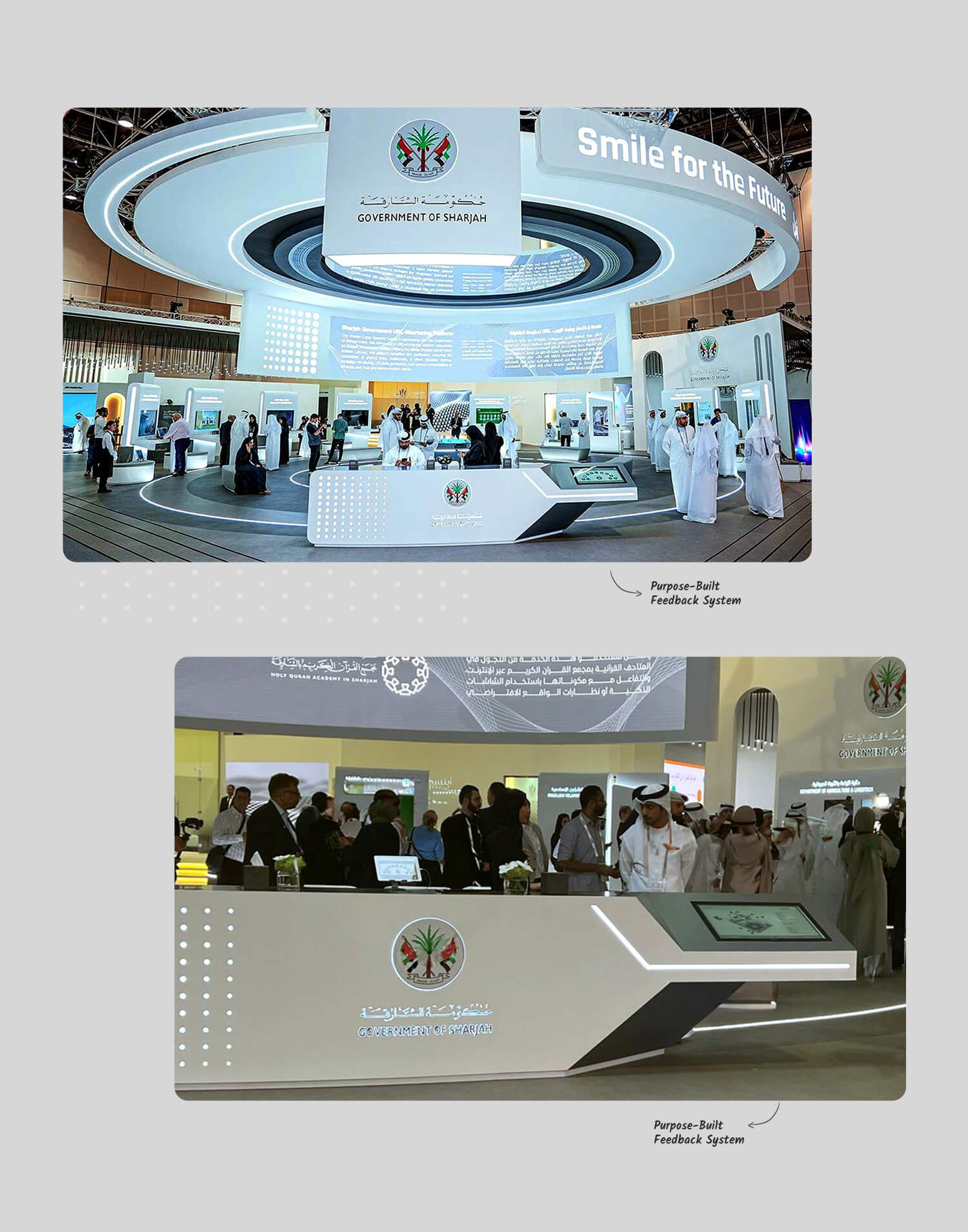
There are times when the sheer size and scale of the project is not just big but crazy big; you have to navigate the various project complexities and battle multiple layers of approval and logistical issues; at the same time, you must keep a cool head to address last-moment modifications that are part and parcel of such projects. Also, there is the added pressure of working with a government entity, an association that can put your company on the map and break your reputation if things head south.
This is a story of such a project. Everyone who is a part of the tech world knows GITEX. It is the world's single most important tech exhibition and is the exhibition that serious tech stakeholders cannot afford to miss. This exhibition sees hundreds of thousands of visitors, including heads of state, tech leaders, and more, who go through its various stalls to immerse themselves in the latest tech innovations.
Our client, ADNEC (Abu Dhabi National Exhibitions Company), is one of the leading exhibition organizers in Abu Dhabi and has been entrusted with overseeing various aspects of the Sharjah Government Pavilion at GITEX. As the primary event partner of the Abu Dhabi government, they had to ensure that the pavilion was strategized and executed seamlessly, ensuring that the exhibition met the highest standards that a government pavilion hopes to achieve.
ADNEC was managing the entire backend of the Sharjah Government Pavilion at GITEX, and they came to us with a simple ask: create a feedback system for all visitors to the Sharjah pavilion, available on a range of clients such as iPads, iPhones, and kiosks. The feedback system was not only about giving feedback but also needed to provide visitors with necessary information about the various government stalls in the pavilion.
The pavilion showcased different initiatives undertaken by the government of Sharjah that encompassed different government departments. The focus was on the tech innovations launched by these departments to bring services closer to citizens, accelerate execution velocity, and contribute towards meeting the highest governance standards. The exhibition covered the government's technology endeavors' present, past, and future. The feedback system was a way of understanding what visitors thought of these exhibition stalls and whether the pavilion made an impact.
The Helveticans team has more than 30 years of experience between them and has worked on several feedback systems. If we have learned anything, no feedback system for an event is simple, especially for an event of the magnitude of GITEX. We realized this fairly early on during the development stage.
The fundamental premise behind any feedback system is collecting data, saving data, sending this data to the server, and leveraging the data on the server to get desired insights. If you think of this like a digital survey wherein data is collated and harnessed to meet pre-determined objectives, creating a feedback system seems like a fairly straightforward task.
This thinking unraveled quickly as we realized this project had many hidden complexities:
Complexity A: This feedback system was explicitly for a pavilion showcasing government initiatives. They were keen on getting as much feedback as possible, and if the number of responses went down, they wanted to proactively up the ante on these responses. For this to happen, feedback had to be shared with the client-server in real time, where a person was designated to track these responses and push the people on the ground in charge of getting these responses to increase responses.
The focus was on keeping track of complete and incomplete responses and ensuring they get as many complete responses as possible. This information had to be shared with the client through easy-to-consume manner, updated in real-time.
Complexity B: GITEX is a world-renowned event attracting the who’s who of the tech world, politicians, and world leaders. As is the norm with such personalities attending an event, security needs to be top-notch, and one security requisite is using jammers, which block WiFI. This was the twist in the tale because no WiFI means no data transmission, and the response data isn’t shared with the server. Another aspect of the ‘jammer’ problem was that the airwaves would get jammed without warning.
Complexity C: We were working with ADNEC and the Sharjah Government and its various departments, which meant the whole project had multiple levels of approvals. Addressing the needs of multiple stakeholders who had their own opinions on the UI/UX, backend functionality, and more was a significant challenge.
Complexity D: Last-minute corrections, updates, and modifications are part and parcel of any events-centric project. The problem was these were coming in from multiple departments and, at the last moment, before the system was about to go live.
Complexity E: Testing the whole feedback response system was another huge challenge. The response system worked perfectly on iPads and iPhones, but there were lingering issues regarding its working on kiosks. These kiosks were installed at the GITEX venue, and each had to be checked to ensure the functional efficiency of the response system.
Never take a project at face value. We realized this almost immediately upon working on this project. From the perspective of the backend architecture, its premise was driven by the superior WiFi connectivity available at GITEX, and the initial plan was not to store the response data on the clients, that is, iPads, iPhones, laptops, and kiosks, but ensure that this data was immediately transferred to the ADNEC servers.
However, ‘jammers’ drove a rethink in our approach. Considering the WiFI would be jammed without warning, we decided that any data captured wouldn’t immediately sync with the server. The data will be saved on the client. The system checks network connectivity and whether the client can establish a robust and uninterrupted connection with the server. Once established, the client will start syncing data with the server. To avoid data loss, the solution was to check whether the last data package was delivered entirely before the connection was lost during data transfer. Only then should a new data packet be transferred.
From the perspective of the challenges faced due to the numerous layers of approval, the solution was getting a progressive understanding of the client’s expectations from the UI and figuring out a unified approach that aligned with the expectations of all departments.
No event is complete without a last-minute scramble, and this is true for the various stakeholders, like us, who were tasked with creating a feedback response system. We were prepped for the changes we expected at the last minute and sorted them out without a “slanging’ match between the team.
The on-ground testing of kiosks was managed in a primal manner, wherein an on-ground person got on a video call from the venue and took the development team through all the kiosks, one kiosk at a time, to sort out the issues, if any.








